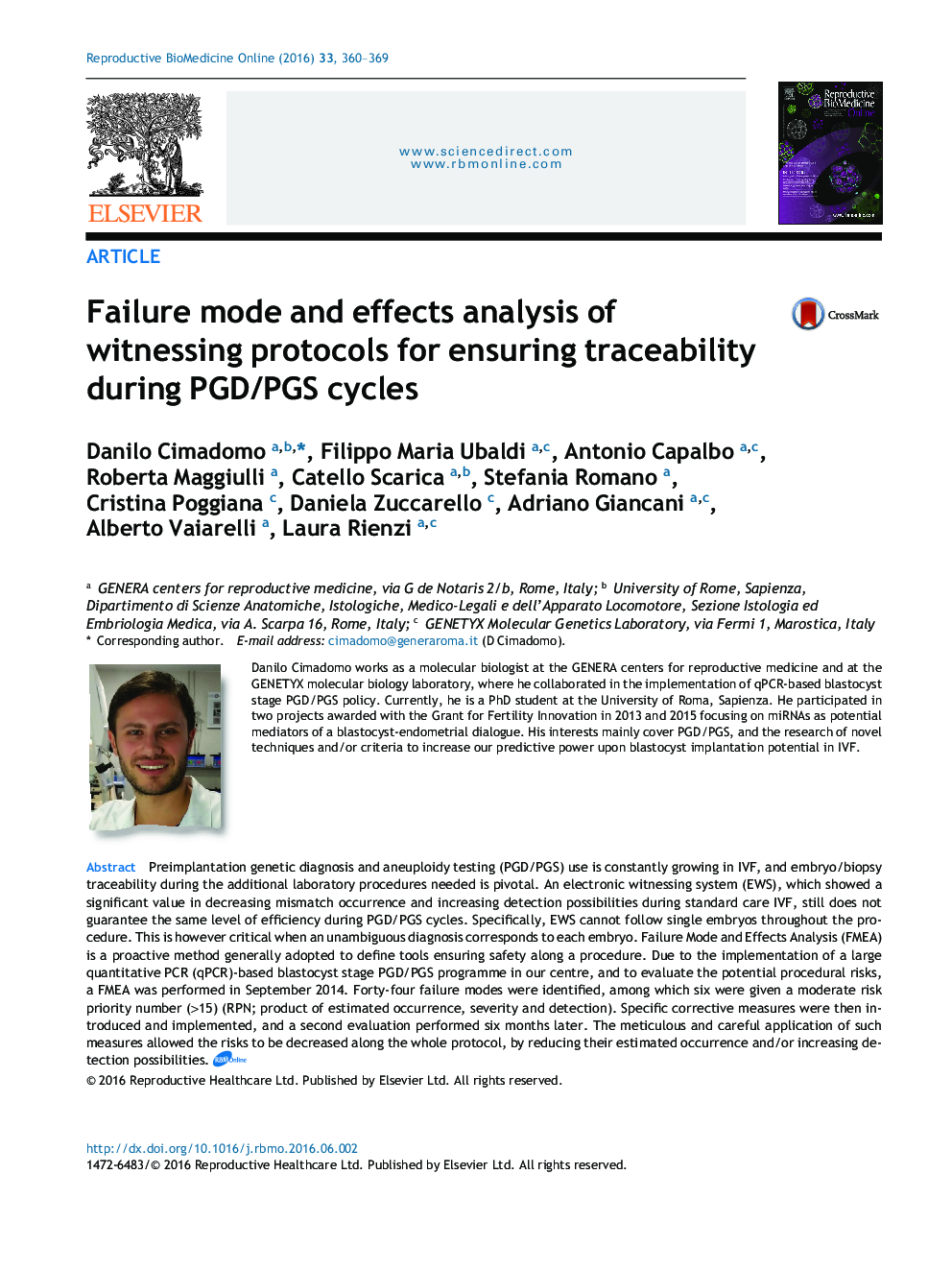| Article ID | Journal | Published Year | Pages | File Type |
|---|---|---|---|---|
| 3969928 | Reproductive BioMedicine Online | 2016 | 10 Pages |
Preimplantation genetic diagnosis and aneuploidy testing (PGD/PGS) use is constantly growing in IVF, and embryo/biopsy traceability during the additional laboratory procedures needed is pivotal. An electronic witnessing system (EWS), which showed a significant value in decreasing mismatch occurrence and increasing detection possibilities during standard care IVF, still does not guarantee the same level of efficiency during PGD/PGS cycles. Specifically, EWS cannot follow single embryos throughout the procedure. This is however critical when an unambiguous diagnosis corresponds to each embryo. Failure Mode and Effects Analysis (FMEA) is a proactive method generally adopted to define tools ensuring safety along a procedure. Due to the implementation of a large quantitative PCR (qPCR)-based blastocyst stage PGD/PGS programme in our centre, and to evaluate the potential procedural risks, a FMEA was performed in September 2014. Forty-four failure modes were identified, among which six were given a moderate risk priority number (>15) (RPN; product of estimated occurrence, severity and detection). Specific corrective measures were then introduced and implemented, and a second evaluation performed six months later. The meticulous and careful application of such measures allowed the risks to be decreased along the whole protocol, by reducing their estimated occurrence and/or increasing detection possibilities.
